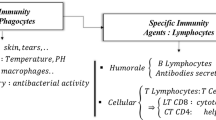Abstract
Negative selection (NS) is one of the most discussed algorithms in artificial immune system (AIS). With its unique property for anomaly detection, it has attracted the attention of researchers in the past decades. However, the processes on how to generate representative detectors and how to define the matching rules remain to be challenges in many NS applications. These difficulties make NS suffer from high false-positive rates and computational complexities. On the other hand, the Mahalanobis distance (MD) is a popular distance metric used in distinguishing patterns of a certain group from those of another group. Compared with other multivariate measurement techniques, MD is superior in its ability to determine the similarity of a set of values from an unknown sample to a set of values measured from a collection of known samples. In this study, an MD-based NS called MDNS is proposed to improve the classification power for anomaly detection by providing the mechanism to judge the quality of detector cells as well as to be applied to define the matching rules and the threshold in a matching rule. Two real cases concerning medical diagnosis and quality inspection in highly reliable products are studied, and the results show that the performance of the NS can be significantly improved by using the proposed approach.




Similar content being viewed by others
References
de Castro LN, Timmis J (2003) Artificial immune systems as a novel soft computing paradigm. Soft Comput 7:526–544
Hart E, Timmis J (2008) Application areas of AIS: the past, the present and the future. Appl Soft Comput 8(1):191–201
Ji Z, Dasgupta D (2007) Revisiting negative selection algorithms. Evol Comput 15(2):223–251
Stibor T, Timmis J, Eckert CA (2005) A comparative study of real-valued negative selection to statistical anomaly detection techniques, artificial immune systems. In: Jacob C, Pilat M, Bently P, Timmis J (eds) Proceedings of the 4th international conference on artificial immune system (ICARIS 2005), Springer, Lecture Notes in Computer Science 3627:262–275
Gao XZ, Ovaska SJ, Wang X (2009) Re-editing and censoring of detectors in negative selection algorithm. Int J Comput Intell Syst 2(3):298–311
Freitas AA, Timmis J (2003) Revisiting the foundations of artificial immune systems: a problem-oriented perspective. In: Timmis J, Bentley P, Hart E (eds) Proceedings of the second international conference on artificial immune system (ICARIS 2003). Springer, Berlin, pp 249–260
González F, Dasgupta D (2003) Anomaly detection using real-valued negative selection. Genetic Prog Evol Mach 4(4):383–403
Freitas AA, Timmis J (2007) Revisiting the foundations of artificial immune systems for data mining. IEEE Trans Evol Comput 11(2):521–540
Srinvasaraghavan J, Allada V (2006) Application of Mahalanobis distance as a lean assessment metric. Int J Advanced Manuf Technol 29:1159–1168
Xiang SM, Nie FP, Zhang CS (2008) Learning a Mahalanobis distance metric for data clustering and classification. Pattern Recogn 41(12):3600–3612
Zhu K, Meng X, Ma Z (2008) Research on intrusion detection technology based on immune algorithm. Int Symp Knowl Acquis Modeling 759–762
Forrest S, Perelson A, Allen L, Cherukuri R (1994) Self-nonself discrimination in a computer. In: Proceedings of the IEEE symposium on research in security and privacy, Los Alamos, pp 202–212
Igawa K, Ohashi H (2009) A negative selection algorithm for classification and reduction of the noise effect. Appl Soft Comput 9(1):431–438
Kim J, Bentley PJ (2001) Towards an artificial immune system for network intrusion detection: an investigation of clonal selection with a negative selection operator. In: Proceedings of the 2001 congress on evolutionary computation, vol 2, pp 1244–1252
Kim J, Bentley PJ (2001) An evaluation of negative selection in an artificial immune system for network intrusion detection. In: Proceedings of genetic and evolutionary computation conference (GECCO’01), pp 1330–1337
Gao XZ, Ovaska SJ, Wang X, Chow MY (2008) A neural network-based negative selection algorithm in fault diagnosis. Neural Comput Appl 17:91–98
Hang X, Dai H (2004) Constructing detectors in schema complementary space for anomaly detection. In: Proceedings of genetic and evolutionary computation conference (GECCO’04), pp 275–286
Laurikkala J, Juhola M, Kentala E (2000) Informal identification of outliers in medical data. In: Proceedings of 25th international workshop on intelligent data analysis in medicine and pharmacology (IDAMAP-2000), pp 20–24
Taguchi G, Jugulum R (2002) The Mahalanobis-Taguchi strategy. Wiley, NJ
Cudney EA, Hong J, Jugulum R, Paryani K, Kenneth M, Taguchi G (2007) An evaluation of Mahalanobis-Taguchi System and neural network for multivariate pattern recognition. J Indus Syst Eng 1(2):139–150
Su CT, Hsiao YH (2007) An evaluation of the robustness of MTS for imbalanced data. IEEE Trans Knowl Data Eng 19(10):1321–1332
Mohan D, Saygin C, Sarangapani J (2008) Real-time detection of grip length deviation during pull-type fastening: a Mahalanobis-Taguchi system (MTS)-based approach. Int J Advanced Manuf Technol 39:995–1008
Wilson DR, Martinez TR (1997) Improved heterogeneous distance functions. J Artif Intell 6:1–34
Panda M, Patra MR (2009) Evaluating machine learning algorithms for detecting network intrusions. Int J Recent Trends Eng 1(1):472–477
Kubat M, Matwin S (1997) Addressing the curse of imbalanced training sets: one-sided selection. In: Proceedings of the 14th international conference on machine learning (ICML1997), pp 179–186
American Diabetes Association (2004) Clinical practice recommendations 2004, Diabetes and classification of diabetes mellitus. Diabetes Care 27:S5–S10
Su CT, Hsiao YH (2009) Multiclass MTS for simultaneous feature selection and classification. IEEE Trans Knowl Data Eng 21(2):192–205
Su CT, Chen LS, Chiang TL (2006) A neural network based information granulation approach to shorten the cellular phone test process. Comput Ind 57:412–423
Author information
Authors and Affiliations
Corresponding author
Rights and permissions
About this article
Cite this article
Chen, LF. An improved negative selection approach for anomaly detection: with applications in medical diagnosis and quality inspection. Neural Comput & Applic 22, 901–910 (2013). https://doi.org/10.1007/s00521-011-0781-5
Received:
Accepted:
Published:
Issue Date:
DOI: https://doi.org/10.1007/s00521-011-0781-5




